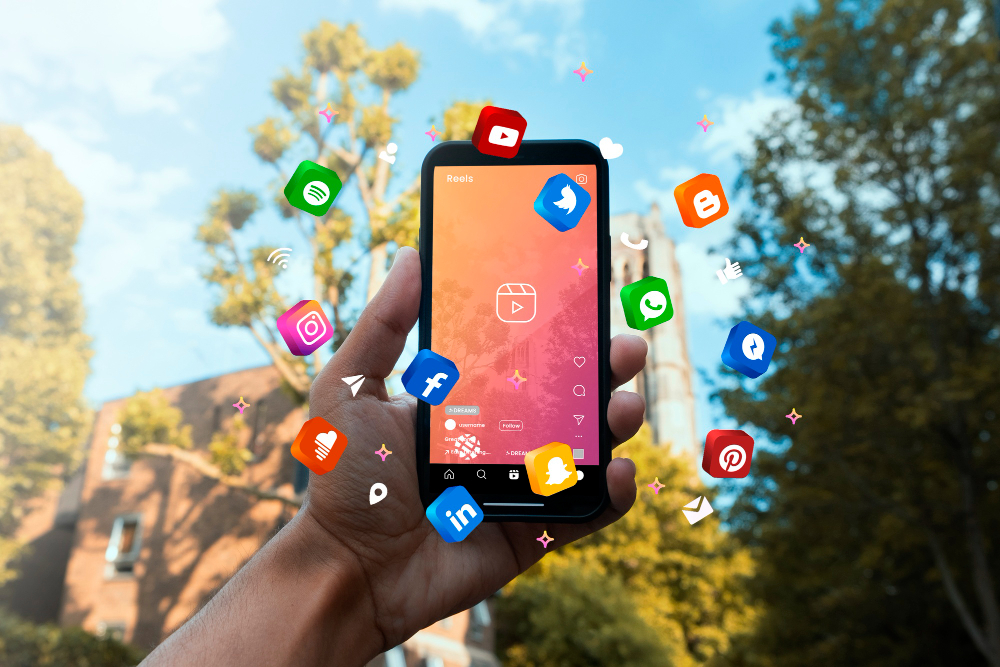
Introduction
In 2025, the digital landscape for B2C businesses has evolved significantly, making social media a non-negotiable channel for engagement, trust-building, and authority. With 50.8% of users using social media to stay connected with friends and family, brands need to position themselves as part of these daily interactions.
However, each social platform serves a different purpose—some are best for community engagement, others for brand awareness, and some for direct sales. Understanding how to use Facebook, Instagram, TikTok, X (Twitter), LinkedIn, YouTube, Reddit, and Telegram strategically is the key to unlocking higher engagement, conversions, and consumer trust.
This blog explores the best strategies for B2C businesses on different social media platforms, with industry-specific statistics, trends, and real-world examples to guide your social media marketing strategy in 2025.
Table of Contents
- The Role of Social Media in B2C Marketing
- Best Social Platforms for B2C Businesses (Data & Comparison)
- Facebook: The Hub for Community Building & Engagement
- Instagram: Visual Storytelling & Shopping Experience
- TikTok: Short-Form Video & Viral Brand Awareness
- X (Twitter): Real-Time Engagement & Customer Support
- YouTube: Long-Form Content & SEO-Driven Visibility
- Reddit & Telegram: Engaging Niche Communities & Direct Conversations
- FAQs on B2C Social Media Strategy
1. The Role of Social Media in B2C Marketing
B2C brands use social media not just for visibility, but to create relationships that translate into brand loyalty and sales. Here are the latest insights:
- 76% of consumers make purchasing decisions based on social media posts.
- More than 80% of businesses say that social media directly contributes to revenue.
- Social commerce is projected to surpass $2 trillion in sales globally by 2025.
- Over 41% of businesses are actively testing proactive engagement strategies on social media.
For B2C brands, this means that simply “posting” isn’t enough. Social media needs to be a well-strategized ecosystem to engage audiences, answer queries, build trust, and drive sales.
2. Best Social Platforms for B2C Businesses (Data & Comparison)
Here’s how different platforms compare in terms of user engagement, brand trust, and conversion rates:
| Platform | Primary Role in B2C | Best Content Types | Engagement Rate (2025) | Conversion Rate (2025) |
| Community & customer engagement | Live videos, ads, posts, groups | 3.8% | 4.5% | |
| Visual storytelling & eCommerce | Reels, stories, influencer marketing | 4.5% | 5.2% | |
| TikTok | Viral brand awareness & short-form content | Short videos, UGC content, brand challenges | 7.1% | 3.9% |
| X (Twitter) | Real-time updates & customer service | Threads, memes, industry trends | 2.2% | 3.6% |
| YouTube | Long-form video & education | Tutorials, reviews, vlogs | 3.9% | 6.1% |
| Niche community engagement | AMAs, discussion threads | 2.4% | 3.8% | |
| Telegram | Direct audience communication | News updates, exclusive deals | 2.8% | 4.2% |
3. Facebook: The Hub for Community Building & Engagement
- Most-used social media platform for B2C businesses (Used by 71% of marketers).
- Best for customer service, brand announcements, and group-based discussions.
B2C Strategy for Facebook in 2025: ✔ Use Facebook Groups to build brand communities. ✔ Leverage Facebook Live to showcase product launches and Q&A sessions. ✔ Run dynamic retargeting ads to drive sales from engaged users. ✔ Share user-generated content to enhance trust.
🔹 Example: Starbucks uses Facebook to create localized community engagement through their dedicated Starbucks Rewards Group.
4. Instagram: Visual Storytelling & Shopping Experience
- 70.2% of Instagram users engage with brand content daily.
- Instagram Shopping features drive 44% of sales from organic content.
B2C Strategy for Instagram in 2025: ✔ Use Instagram Reels & Stories to create engaging brand narratives. ✔ Implement influencer marketing for product recommendations. ✔ Use carousel posts for product highlights & educational content. ✔ Leverage Instagram Shopping to drive direct in-app purchases.
🔹 Example: Nike uses Instagram Reels to showcase product durability through interactive athlete content.
5. TikTok: Short-Form Video & Viral Brand Awareness
- 79.6% of users engage with entertaining content.
- Brands that use TikTok see 2x higher engagement compared to Instagram.
B2C Strategy for TikTok in 2025: ✔ Create engaging brand challenges. ✔ Leverage UGC (User-Generated Content) for credibility. ✔ Jump on trending sounds and hashtags. ✔ Collaborate with micro-influencers for authentic reach.
🔹 Example: Duolingo’s mascot videos went viral, boosting app downloads by 12% in 3 months.
6. X (Twitter): Real-Time Engagement & Customer Support
✔ Use X for real-time engagement & brand personality. ✔ Leverage Twitter Spaces for live discussions. ✔ Provide 24/7 customer service via Twitter replies.
🔹 Example: Wendy’s uses humor-driven tweets to boost brand awareness and engagement.
7. YouTube: Long-Form Content & SEO-Driven Visibility
✔ Create tutorial and explainer videos for product education. ✔ Host behind-the-scenes content to humanize the brand. ✔ Use YouTube Shorts for quick, digestible information.
🔹 Example: Apple uses YouTube to educate users through “How-To” videos on product features.
8. Reddit & Telegram: Engaging Niche Communities & Direct Conversations
✔ Use Reddit AMAs to answer consumer questions directly. ✔ Leverage Telegram for exclusive deals & loyalty programs.
🔹 Example: Tesla engages directly with car enthusiasts on Reddit, addressing product queries.
9. FAQs on B2C Social Media Strategy
1. Which platform is best for B2C conversions?
👉 Instagram Shopping and TikTok offer the highest conversion rates for direct eCommerce.
2. How often should B2C brands post?
👉 3-5 times per week on each platform for consistency.
3. Should all B2C brands use TikTok?
👉 Yes, if their audience is under 40.
4. How can social media increase B2C trust?
👉 Authenticity, UGC, and real-time engagement.
Final Thoughts
A platform-specific approach is essential for B2C success in 2025. Mastering engagement, trust, and sales through each platform’s unique strengths will drive exponential growth for brands in the coming years. 🚀
